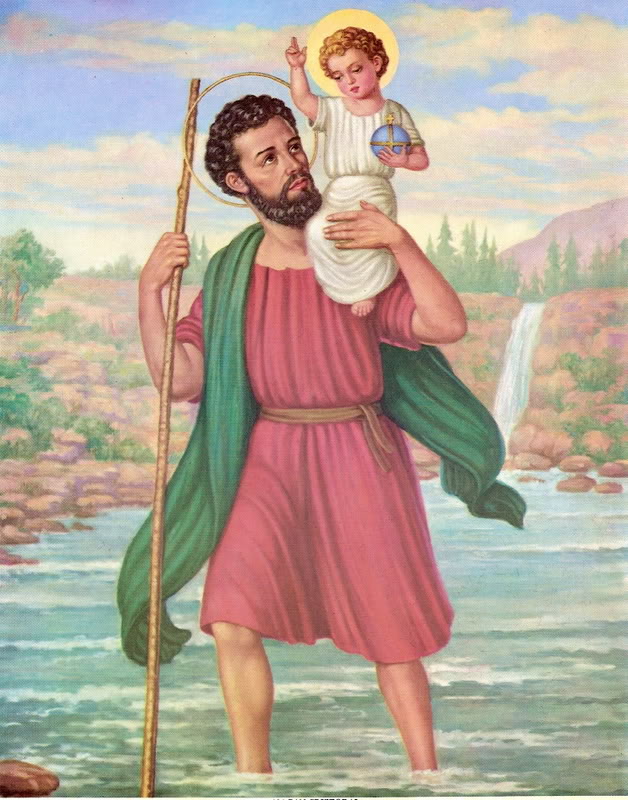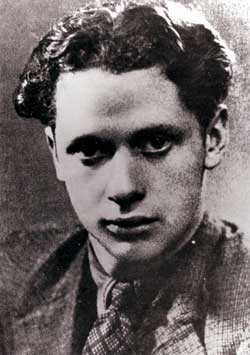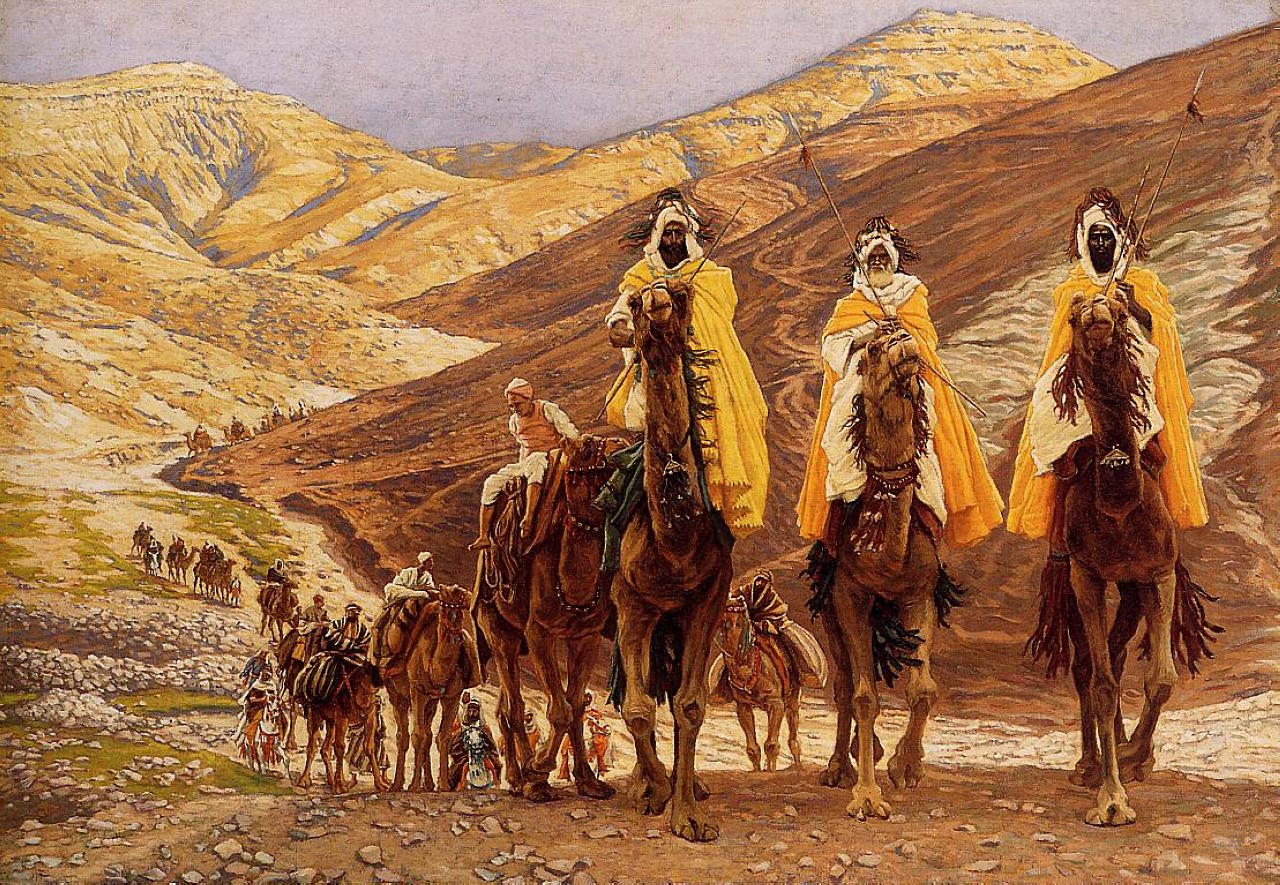before a vowel amph-, word-forming element from Greek amphi- "both, of both kinds, on both sides, around," from amphi "round about, around;"
※amphibian
1630s, "having two modes of existence, of doubtful nature," from Greek amphibia, neuter plural of amphibios "living a double life," from amphi- "of both kinds" + bios "life" .
----------------------------------------------------------------------------------------------------------------
Saint Christopher

Attributes tree, branch, as a giant or ogre, carrying Jesus, spear, shield, as a dog-headed man
Patronage bachelors, transportation (drivers, sailors, etc.), traveling (especially for long journeys), storms, Brunswick, Saint Christopher's Island (Saint Kitts), Island Rab, Vilnius, epilepsy, gardeners, holy death, toothache
Saint Christopher is venerated by several Christian denominations as a martyr killed in the reign of the 3rd-century Roman Emperor Decius or alternatively under the Roman Emperor Maximinus II Dacian . There appears to be confusion due to the similarity in names "Decius" and "Dacian".
However his veneration only appears late in Christian tradition, and did not become widespread in the Western Church until the Late Middle Ages, although churches and monasteries were named after him by the 7th century.

It is disputed whether Christopher existed, and if so whether the name applied to a specific person or was a general title meaning "Christ-bearer" which was applied to several different real or legendary people. He may be the same figure as Saint Menas. His most famous legend, which is mainly known from the West and may draw from Ancient Greek mythology, tells that he carried a child, who was unknown to him, across a river before the child revealed himself as Christ. Therefore, he is the patron saint of travelers, and small images of him are often worn around the neck, on a bracelet, carried in a pocket, or placed in vehicles by Christians.
Legend
There are several legends associated with the life and death of Saint Christopher which first appeared in Greece and had spread to France by the 9th century.[citation needed] [1] The 11th-century bishop and poet, Walter of Speyer, gave one version, but the most popular variations originated from the 13th-century Golden Legend.
According to the legendary account of his life Christopher was initially called Reprobus. He was a Canaanite, 5 cubits tall and with a fearsome face. While serving the king of Canaan, he took it into his head to go and serve "the greatest king there was". He went to the king who was reputed to be the greatest, but one day he saw the king cross himself at the mention of the devil. On thus learning that the king feared the devil, he departed to look for the devil. He came across a band of marauders, one of whom declared himself to be the devil, so Christopher decided to serve him. But when he saw his new master avoid a wayside cross and found out that the devil feared Christ, he left him and enquired from people where to find Christ. He met a hermit who instructed him in the Christian faith. Christopher asked him how he could serve Christ. When the hermit suggested fasting and prayer, Christopher replied that he was unable to perform that service. The hermit then suggested that because of his size and strength Christopher could serve Christ by assisting people to cross a dangerous river, where they were perishing in the attempt. The hermit promised that this service would be pleasing to Christ.
After Christopher had performed this service for some time, a little child asked him to take him across the river. During the crossing, the river became swollen and the child seemed as heavy as lead, so much that Christopher could scarcely carry him and found himself in great difficulty. When he finally reached the other side, he said to the child: "You have put me in the greatest danger. I do not think the whole world could have been as heavy on my shoulders as you were." The child replied: "You had on your shoulders not only the whole world but Him who made it. I am Christ your king, whom you are serving by this work." The child then vanished.
Christopher later visited Lycia and there comforted the Christians who were being martyred. Brought before the local king, he refused to sacrifice to the pagan gods. The king tried to win him by riches and by sending two beautiful women to tempt him. Christopher converted the women to Christianity, as he had already converted thousands in the city. The king ordered him to be killed. Various attempts failed, but finally Christopher was beheaded.
Historical identification
The earliest known woodcut, 1423, Buxheim, with hand-colouring
Historical examination of the legends suggests Reprobus (Christopher) lived during the Christian persecutions of the Roman emperor Decius , and that he was captured and martyred by the governor of Antioch.[7] Historian David Woods has proposed that St. Christopher's remains were possibly taken to Alexandria by Peter of Attalia where he may have become identified with the Egyptian martyr Saint Menas.
The legend of Saint Christopher records two important historical facts that identify him with the historical Saint Menas. The first is that the Greek and Latin legends of Saint Christopher identify him as belonging to the Third Valerian Cohort of the Marmantae (Latin: Cohors tertia Valeria Marmantarum), a military unit of Northern Africa of Marmarica (between modern day Libya and Egypt), recruited by none other than the Emperor Diocletian. The second is that Saint Christopher was martyred in Antioch.
The martyrdom of Saint Menas corresponds to the details of the legend of Saint Christopher. The theory that identifies the two saints as one and the same concludes that the name "Christopher" meaning "Christ-bearer" was a title given to the name of the valiant Menas who died in Antioch. Since he was not a native of that land, his name was not known and so he was simply revered by his generic title: "Christophoros" or "Christ-Bearer."Saint Menas happens to be the patron of travelers in the Coptic tradition,which further supports an association with Saint Christopher who is the patron of travelers in the Greek and Latin traditions.
Part of Saint Christopher's story closely parallels that of the Argonaut Jason, who carried across a raging river an old woman that was likewise described as being far heavier than she should have been and was actually the goddess Hera in disguise.
------------------------------------------------------------------------------------------------------------------------
When I Was One-and-Twenty
BY A. E. HOUSMAN

When I was one-and-twenty
I heard a wise man say,
“Give crowns and pounds and guineas
But not your heart away;
Give pearls away and rubies
But keep your fancy free.”
But I was one-and-twenty,
No use to talk to me.
When I was one-and-twenty
I heard him say again,
“The heart out of the bosom
Was never given in vain;
’Tis paid with sighs a plenty
And sold for endless rue(regret).”
And I am two-and-twenty,
And oh, ’tis true, ’tis true.


“When I was one-and-twenty” by A.E Housman carries
a much different message then the last poem I posted about.
The poem is about a young woman who twenty two years old.
When she was twenty one years old, a wise older man told her
not to give her heart away. He says that she can give anything
away except her heart.
I think he says this because he has experienced heartbreak and
does not want the young woman to get hurt like he did.
------------------------------------------------------------------------------------------------------------
Do not go gentle into that good night
Dylan Thomas
Do not go gentle into that good night,
Old age should burn and rave at close of day;
Rage, rage against the dying of the light.
Though wise men at their end know dark is right,
Because their words had forked no lightning they
Do not go gentle into that good night.
Good men, the last wave by, crying how bright
Their frail deeds might have danced in a green bay,
Rage, rage against the dying of the light.
Wild men who caught and sang the sun in flight,
And learn, too late, they grieved it on its way,
Do not go gentle into that good night.
Grave men, near death, who see with blinding sight
Blind eyes could blaze like meteors and be gay,
Rage, rage against the dying of the light.
And you, my father, there on the sad height,
Curse, bless, me now with your fierce tears, I pray.
Do not go gentle into that good night.
Rage, rage against the dying of the light.
★About the writer:

Dylan Marlais Thomas, born October 27, 1914, in South Wales, was the archetypal Romantic poet of the popular American imagination—he was flamboyantly theatrical, a heavy drinker, engaged in roaring disputes in public, and read his work aloud with tremendous depth of feeling and a singing Welsh lilt.
---------------------------------------------------------------------------------------------------------
DO NOT GO GENTLE INTO THAT GOOD NIGHT INTRODUCTION

In A Nutshell
Dylan Thomas's most famous poem, known by its first line "Do Not Go Gentle into That Good Night," is also the most famous example of the poetic form known as the villanelle. (See "Rhyme, Form, and Meter" for an explanation of the villanelle.) Yet, the poem's true importance lies not in its fame, but in the raw power of the emotions underlying it. Thomas uses the poem to address his dying father, lamenting his father's loss of health and strength, and encouraging him to cling to life. The urgency of the speaker's tone has kept the poem among the world's most-read works in English for more than half a century.
Dylan Thomas was an introverted, passionate, lyrical writer (lyrical = a kind of poem or work that expresses personal feelings) who felt disconnected from the major literary movement of his day – the high modernism of T.S. Eliot and Wallace Stevens. Thomas was born in Wales in the year that World War I began, 1914, and his reactions to the events of the two World Wars strongly influenced his writing. His first book of poetry made him instantly famous at the age of twenty. Thomas embraced fame in much the same way that another passionate poet, Lord Byron, had done two hundred years earlier – by adopting wild rock-star behavior and intense displays of feeling, especially in his public poetry readings.
Thomas was also known to be a heavy drinker. Sadly, only two years after writing "Do Not Go Gentle into That Good Night" about his father's approaching death, Thomas himself died, probably from alcohol poisoning and abuse, although the exact details of his death are controversial. His premature death at the age of 39 is reminiscent of the early death of another Romantic poet, John Keats. Like Keats, Thomas died before he fully expressed his literary potential; but, also like Keats, he left behind a few enduring works that promise to last through the ages.

WHY SHOULD I CARE?
Imagine this: your team is down by an unbelievable number of points and there are only a few minutes left in the game. You've pretty much decided that you're going to head out there, stand around for a bit, and let it end as quickly as possible so that you can just go home. But then your coach pulls you aside and gives you a pep talk. You need to finish strong! Even if you can't win, go out there and put up a fight. Put your heart and soul into it! Even if you're on the verge of losing, you still need to play your hardest, because that's what great athletes do!
Sound familiar? Well, "Do Not Go Gentle into That Good Night" is like that inspirational coach's speech. In just the way that a coach encourages athletes to keep playing their hardest even when a loss is certain, the speaker of this poem encourages his father to fight the inevitability of death. Sure, the father has grown old and frail. Sure, he's definitely going to die. But that doesn't mean he should let himself fade away. The speaker wants him to wage a war against death, using all his strength and power as long as he can, even when things are completely hopeless.
So, if you've ever given your best when you knew it was useless, or you've known someone who has, or if you are disturbed and frustrated by the way that death comes to everyone – then, yes, this poem is for you.
--------------------------------------------------------------------------------
JOURNEY OF THE MAGI INTRODUCTION

In A Nutshell
"Journey of the Magi," though often thought of as minor in T.S. Eliot's overall oeuvre (a fancy French term that basically means "everything the guy's ever done"), is nevertheless cited by academics as a piece that signifies a major transformation in the poet's career. And it should be—it was composed right around the time that Eliot converted from Unitarianism to Anglicanism, in 1927. Not to go into too much religious detail right here and now, but let's just say that the switch was from "not really very religious at all" to "pretty devout, actually." It was kind of a big deal.
So "Journey of the Magi," then, often gets scrutinized for containing bits and pieces of Eliot's feelings about said conversion, even though the poem itself isn't about Eliot at all. Instead, the piece details the thoughts of one particular Magus —one of the Three Wise Men. You know, the dudes bringing frankincense, gold, and myrrh to the newborn Jesus?
This poem takes place just a smidge before the wise men get to the stable. It details the hardships of the journey, the skepticism of the Magus (seems like they left that part out of the Bible), and the landscape of Bethlehem. In the end, the narrator is shaken to his very core by what he sees, because change, it is a-comin', and change can be scary business.
You might be able to see, then, where people get this whole idea that the narrative is also, subtext-wise, about Eliot's own conversion (a word that means change). After "Journey," which was published in 1930, Eliot didn't write a whole lot else—or rather, not a whole lot that we get particularly excited about. His gigantic works of literature—namely, "The Love Song of J. Alfred Prufrock" and "The Waste Land"—had already been published, and had put T.S. Eliot on the map as one of the greatest poetic minds of his time. But this poem, as we'll see in a minute, is much more than just a Christmas poem. Even though the story at first seems simple, the piece teems with intricate symbols, obscure references, and layers of subtext. Sudden religiosity or no, this is still very recognizably T.S. Eliot.

WHY SHOULD I CARE?
For one thing, it's always kind of neat to see traditional stories played with a bit—especially by authors who are the best of their kind at such playing. The Bible doesn't get into the wise men's heads, really, and so "Journey of the Magi" fills in a gap, which is always cool. But what if we don't really know the Bible? Or its stories? What if we're not Christian? What could this poem possibly have to tell us?
A lot, as it turns out. If we move for a minute past the Biblical nature of this poem, what the thing's really about is change. And we've all had to deal with that. Moving to a new town. First day of high school. Puberty. Any kind of spiritual revelation, Christian or otherwise. Going to college. You get the picture. All of these things are turning points in our lives, and you know what? They can be terrifying. Even if they turn out to be pretty awesome in the end (college, for instance, is just the best, once you're done hyperventilating about it).
This happens to be the case for the Magus in this poem. If you're familiar with the traditional Biblical story, you know that the Magi saw an angel that proclaimed to them some seriously Good News: that a savior was going to be born in Bethlehem. We're talking here about a person who was going to bring the kind of peace and prosperity to the world the likes of which the world had never seen. Couldn't be a bad thing, right?
Except for the fact that well, hmm, what is this change going to look like? Maybe it'll be stressful, maybe it'll throw some Kings (which is what the Magi were) out of power. We're betting at least one of them was going, "Hmm, I dunno about all this…"
See where we're going? Even in the face of something that's supposed to be the best thing ever, there's fear and uncertainty and doubt. It's what we all grapple with when we're trying to deal with major change, too. Eliot's poem is just one really unique way to tell us about one man's trouble with transition, and to help us see that even seemingly doubt-free things like religious conversion can be way more complicated than they first appear.
-------------------------------------------------------------------------------------------------------------------
Journey of the Magi - Summary and Critical Analysis

The poem Journey of the Magi is based on the theme of the Bible. It is full of religious feeling. The visit of the Three Wise Men of East to Palestine at the time of Christ's birth has been described in a very realistic way. The wise men started their journey in the extreme cold of the winter to reach the place of Christ's birth to offer presents to him.
In the course of their journey they got many hardships and suffering. In spite of this they continued their journey throughout the night. In the way they did not get shelter and food. The snowy way made their camel tired. The idea of beautiful girls who were not present to entertain them is also very imaginative and artistic. Again the non co-operation of people in the way is also very heart-touching. The wise men did not get any help from the people of cities and town. They were hostile and unfriendly to them. This shows that those people lacked farsightedness about the importance of Christ's birth.
In the course of a journey, they saw a temperate valley with natural vegetation and beauty which lessened their tiredness. This is full of nature description and proves that Eliot was a nature poet also. The sounds of the stream and water-mill and smell of vegetation were very pleasant to the Magi and the readers. The white horse galloped in the meadow is also very symbolic and it points out the speed of the horse with his rider. The Magi reached a tavern where they did not get co-operation of those six men who were busy in gambling society. The Magi reached their destination and offered their present to Christ. This is a religious achievement of T.S. Eliot.
The poet wants to emphasize that the birth and death of Christ were different from the common people. His birth was hard and bitter agony of the human race, like death. He was crucified for the redemption of humanity from sins and bondages. The description of three trees on the low sky symbolizes the future Crucifixion of Christ because he was crucified near the three trees. The poet takes a sense of relief and appreciates the quality of Christ and his extraordinary death. The language of the poem is very measured. The poet has achieved grand success as an artist. The poem is very symbolic and full of religious touch.
"Journey of the Magi" is an allegory of the spiritual journey in which the flesh still craves for sensual enjoyment. The details of the journey of the three wise men from the east bound for Jerusalem to honor the newborn Jesus are the "objective correlatives" of the spiritual experiences of the journey from the kingdom of the world to the kingdom of heaven, which entails the death of the old physical self and the birth of a new spiritual one. It is a long hazardous journey in "the worst time of the year" in the "very dead of winter", when the body needs protection and seeks sensual pleasure.
The Magi are a composite symbol of the spiritual quest. While one of them reminisces the journey undertaken by them he longingly recollects their indulgence in sensual pleasure. He says that while they were going to Emmaus, they felt drawn to the fleshly enjoyments, the lack of which tortured them and in such a moment of spiritual crisis, they regretted to have obeyed the call of the spirit.
However, the quester survives the long journey in the night and at dawn he is in a "temperate valley" where everything is pleasant. It is the dawn of spiritual exhilaration; the different aspects of nature signify the new images of life; the "running stream" symbolizes the rhythmic flow of life; the "water-mill beating the darkness" suggests the doubt being driven away; the galloping away of "the white horse" in the meadow symbolizes upward movement of the spirit. At this stage the quester becomes conscious of the betrayal of the man of belief at the hands of those who are without any belief. In this kingdom of spirit he visualizes the three cross on Calvary, one of Christ and the other two of the two "male-factors". He also has the vision of Christ riding a white horse and of Judas betraying Christ for thirty pieces of silver, and the Roman dicing for the robes of Christ after the Crucifixion. These memories of the misdeeds of men without belief engage his mind for a while and he realized that the secret of his quest is not revealed to him as yet and so he continues his exploration. At the end of the day he finds himself in a place from where he looks back to the region he has traversed and feels satisfied with the advance he has made.
The positive gain of the journey is the affirmation of the belief that for the spiritual rejuvenation the overcoming of the sensual aspect of life is essential. "Journey of the Magi" is inspired by the story in the Gospel according to St. Matthew. One of the Magi recounts the arduous journey they undertook to witness the Birth which was 'hard and bitter agony' for them. The journey is beset with the same kinds of temptations as are hinted at in "Ash Wednesday", and similar regrets for the summer palaces or slopes, the terraces, and the silken girls bringing sherbet. The New Birth does not bring unalloyed joy because the transition from the old to the new is accompanied by pain. It is a kind of experience referred to by Jung in his Psychological Types: 'The birth of the deliverer is equivalent to a great catastrophe since a new and powerful life issues forth just when no life or force or new development was anticipated'.
----------------------------------------------------------------------------------------------------------------------
Interpretation and analysis of JOURNEY OF THE MAGI INTRODUCTION
". . . were we led all that way for
Birth or Death?"
The birth of the Christ was the death of the world of magic, astrology, and paganism.(cf Colossians 2:20) The speaker, recalling his journey in old age, says that after that birth his world had died, and he had little left to do but wait for his own end.
There are at least two formal elements of the poem that are interesting. The first is that the poem maintains Eliot's long habit of using the dramatic monologue – a form he inherited and adapted from Robert Browning. The speaker of the poem is in agitation and speaks to the reader directly. His revelations are accidental and born out of his emotional distress. As with other works, Eliot chooses an elderly speaker – someone who is world-weary, reflective, and sad (cf. The Love Song of J. Alfred Prufrock, Gerontion, the Tiresias narrator of The Waste Land, and possibly the narrator of The Hollow Men). His narrator in this poem is a witness to historical change who seeks to rise above his historical moment, a man who, despite material wealth and prestige, has lost his spiritual bearings.
The second stanza of the poem has metaphor images of Christ's later life from the passion to the crucifixion including the trees referring to calvary the dicing for his clothes, as well as images of the Old Testament, Passover, in the lintel, and Revelation in the white horse.
Secondly, the poem has a number of symbolist elements, where an entire philosophical position is summed up by the manifestation of a single image. For example, the narrator says that on the journey they saw "three trees against a low sky"; the single image of the three trees implies the historical future (the crucifixion) and the spiritual truth of the future (the skies lowered and heaven opened).
About the writer:
 |
| T. S. Eliot |


)


